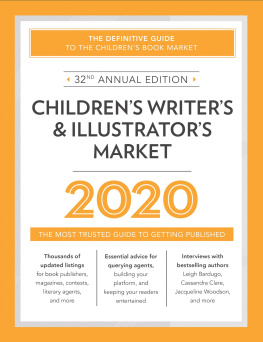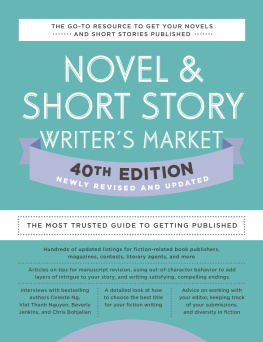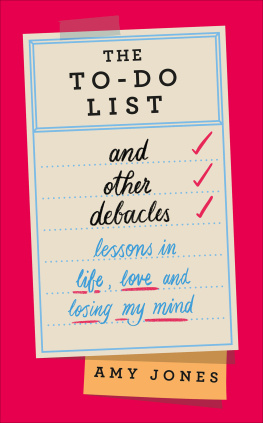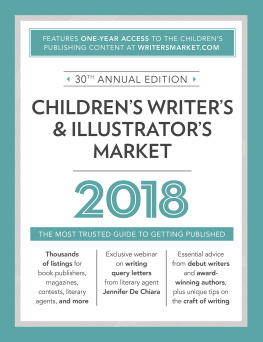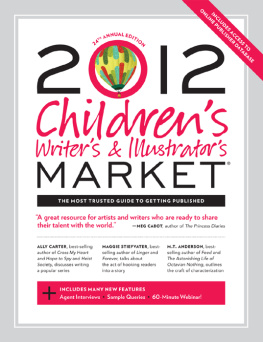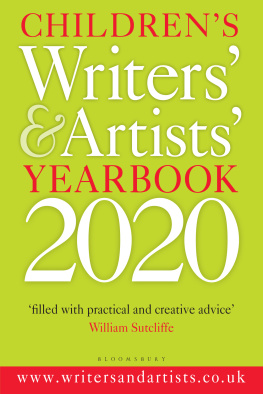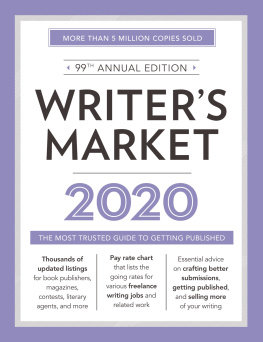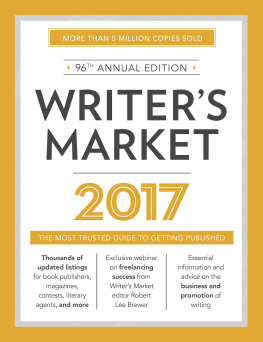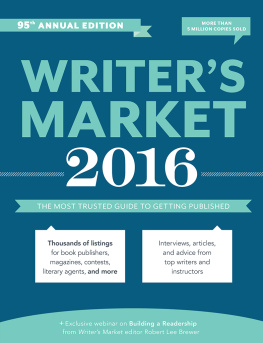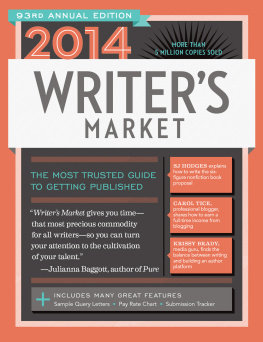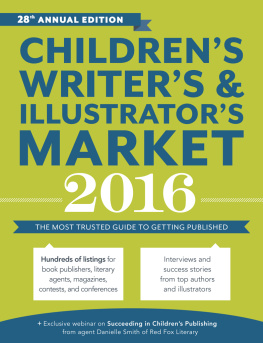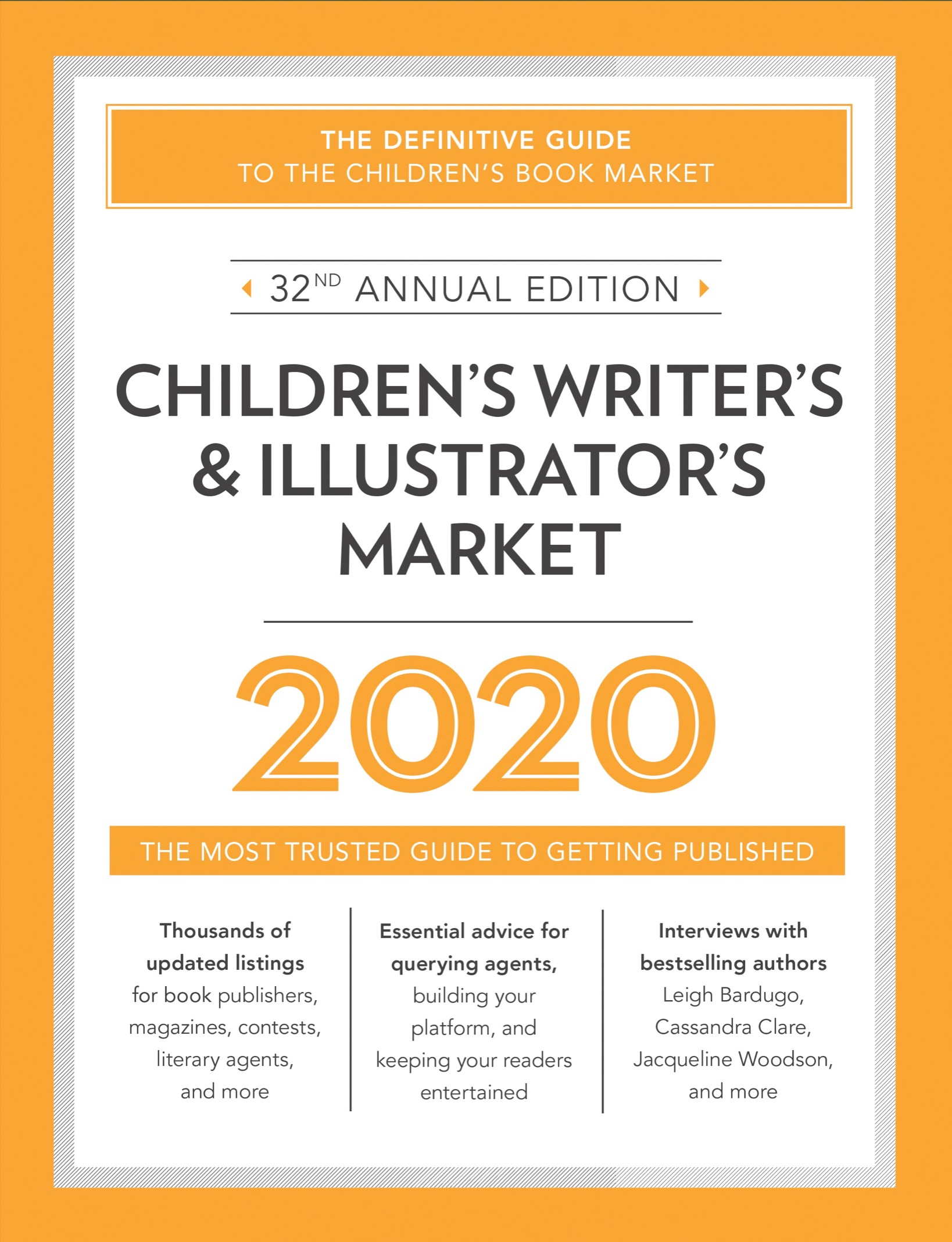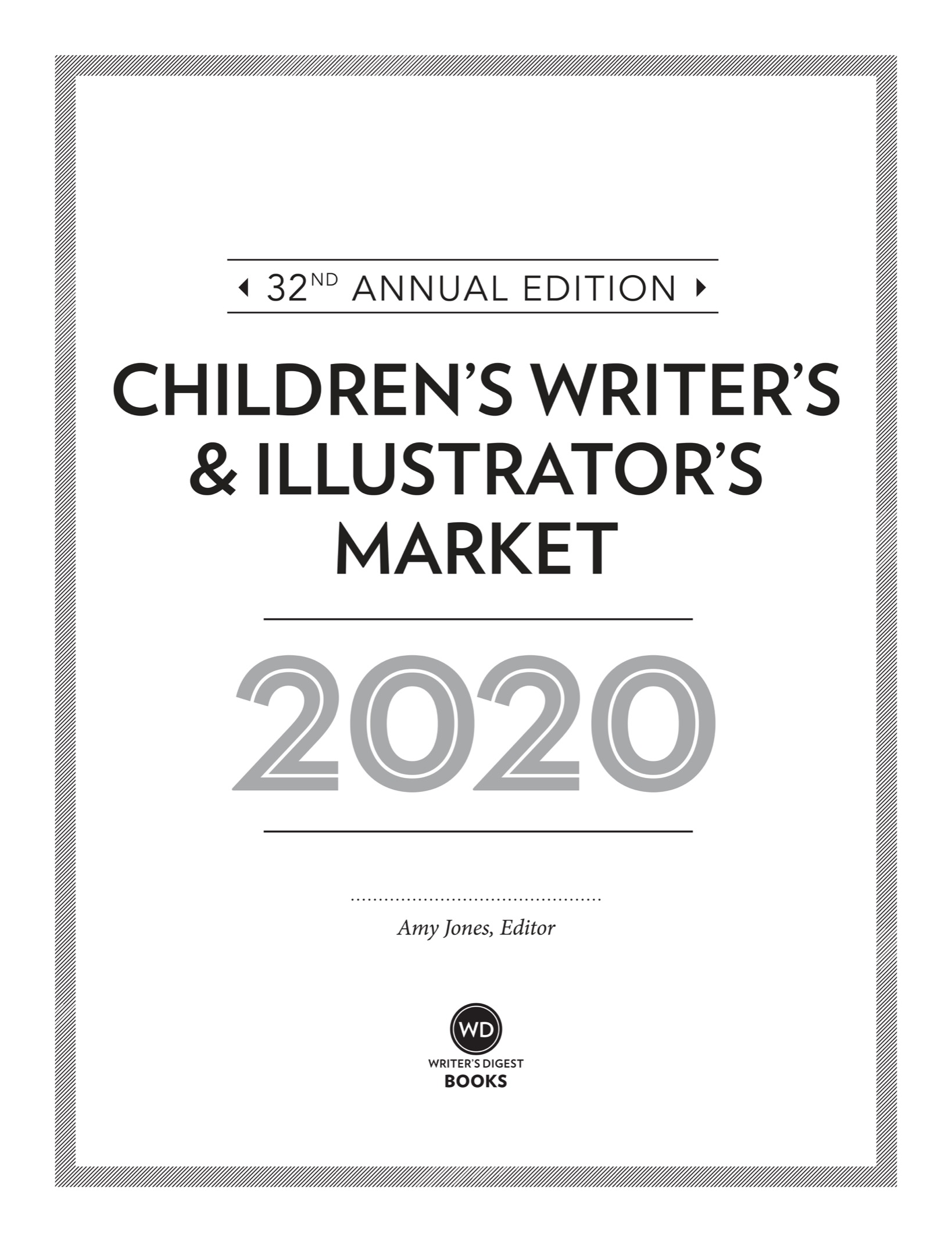FROM THE EDITOR
Welcome to the 32nd Annual Edition of the Childrens Writers and Illustrators Market! In this edition, my goal was not just to balance the articles and listings, but within the articles, to include useful information for writers of the wide age spectrum that encompasses childrens writing. So youll find articles that speak to everything from picture books to YA novels.
In the section of craft articles youll find brilliant excerpts from Ann Whitford Pauls book, Writing Picture Books Revised and ExpandedEdition, plus articles about creating compelling characters. Youll also find interviews with bestselling authors including Jacqueline Woodson, Cassandra Clare, N.K. Jemisin, and more. Learn more about promoting your work, whether self-published or traditionally published, and much more in the collection of business and promotion articles.
As usual, the listings in this edition run the gamut from book publishers in the United States and abroad; magazines; agents and art reps; clubs and organizations; conferences and workshops; and contests, awards, and grants.
With the help of these resources, I hope 2020 will be your most satisfying and productive year yet.
Amy Jones
Managing Content Director
Childrens Writers & Illustrators Market
http://twitter.com/AmyMJones_5
HOW TO USE CHILDRENS WRITERS & ILLUSTRATORS MARKET
As a writer, illustrator, or photographer first picking up Childrens Writers & Illustrators Market, you may not know quite how to start using the book. Your impulse may be to flip through the book and quickly make a mailing list, then submit to everyone in hopes that someone will take interest in your work. Well, theres more to it. Finding the right market takes research. The more you know about a market that interests you, the better chance you have of getting work accepted. Weve made your job a little easier by putting a wealth of information at your fingertips. Besides providing listings, this directory has a number of tools to help you determine which markets are the best ones for your work. By using these tools, as well as researching on your own, you raise your odds of being published.
USING THE INDEXES
This book lists hundreds of potential buyers of material. To learn which companies want the type of material youre interested in submitting, start with the indexes.
Subject Index
But lets narrow the search further. Take your list of young adult magazines, turn to the Subject Index, and find the Fashion subheading. Then highlight the names that appear on both lists (Young Adult and Fashion). Now you have a smaller list of all the magazines that would be interested in your teen fashion article. Read through those listings and decide which seem (or look) best for your work.
Illustrators and photographers can use the Subject Index as well. If you specialize in painting animals, for instance, consider sending samples to book and magazine publishers listed under Animals and, perhaps, Nature/Environment. Because illustrators can simply send general examples of their style to art directors to keep on file, the indexes may be more helpful to artists sending manuscript/illustration packages who need to search for a specific subject. Always read the listings for the potential markets to see the type of work art directors prefer and what type of samples theyll keep on file, and obtain art or photo guidelines if theyre available online.
Age-Level Index
Age groups are broken down into these categories in the Age-Level Index:
PICTURE BOOKS OR PICTURE-ORIENTED MATERIAL are written and illustrated for preschoolers to eight-year-olds.
YOUNG READERS are for five- to eight-year-olds.
MIDDLE READERS are for nine- to eleven-year-olds.
YOUNG ADULT is for ages twelve and up.
Age breakdowns may vary slightly from publisher to publisher, but using them as general guidelines will help you target appropriate markets. For example, if youve written an article about trends in teen fashion, check the Magazines Age-Level Index under the Young Adult subheading.
USING THE LISTINGS
Some listings begin with symbols. Many listings indicate whether submission guidelines are indeed available. If a publisher youre interested in offers guidelines, get them and read them. The same is true with catalogs. Sending for and reading catalogs or browsing them online gives you a better idea of whether your work would fit in with the books a publisher produces. (You should also look at a few of the books in the catalog at a library or bookstore to get a feel for the publishers material.)
A Note for Artists & Photographers
Along with information for writers, listings provide information for illustrators and photographers. Illustrators will find numerous markets that maintain files of samples for possible future assignments. If youre both a writer and an illustrator, look for markets that accept manuscript/illustration packages and read the information offered under the

